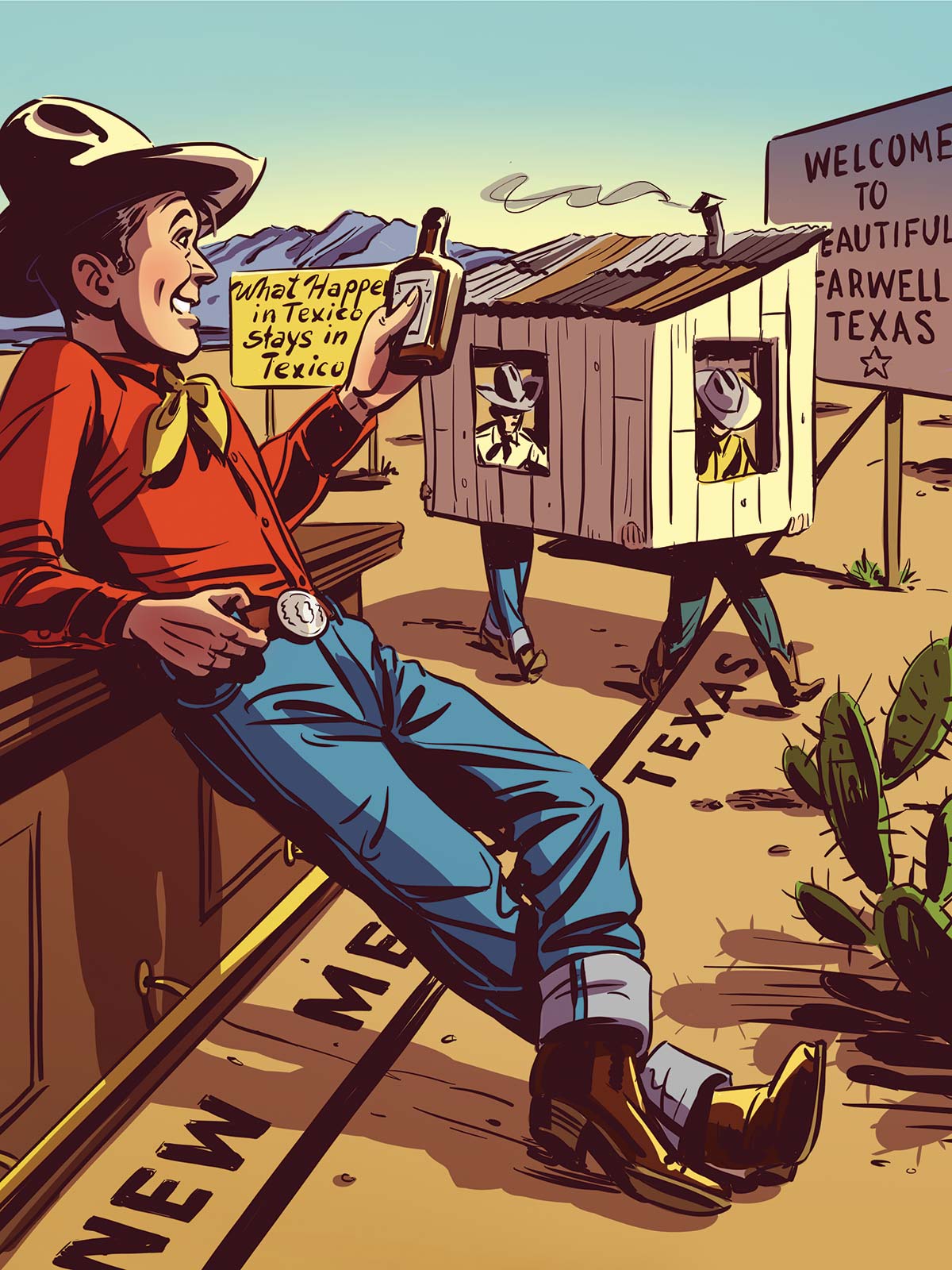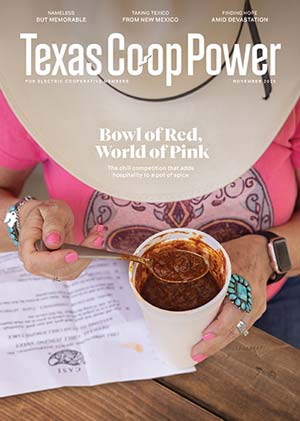This is a tale of two towns established just a few years apart along the Texas-New Mexico border.
Texico, on the New Mexico side, sprang up first as a shanty along the Atchison, Topeka and Santa Fe Railway in the early 1900s. It had a reputation as one of the wildest towns in the West. Its gambling halls, bars and brothels were built on an untitled parcel of property one writer called “the unsurveyed strip.”
Then, a few years later, came Farwell, just across the border. It was better built on titled lands and far more orderly.
Listen as W.F. Strong Narrates This Story
Visit Texas Standard for more W.F. Strong stories (most of which are true).
The lore of the period claimed that Farwell stole the town of Texico, almost overnight. It’s a large claim but not without merit. Here’s how it happened.
Texico was a town of squatters and wooden shacks that sprang up quickly and haphazardly. The shacks were about the size of today’s average backyard shed. They had dirt floors and could be picked up and moved easily with just a few people walking them down the dusty street to a better location and a better view.
Imagine a squatter going to sleep in his home one night, dreaming of the garden he would plant—and the next morning waking up to greet a new neighbor whose shack was sitting where the dreamed-of garden was supposed to go. But with no surveyed lots and no titles, it was difficult to claim ownership of anything.
A writer for Cosmopolitan magazine, Eleanor Gates, went to visit these most uncosmopolitan twin towns at the turn of the last century. She listed the businesses along one side of the street in Texico like so: “gambling-hell, restaurant, saloon, gambling-hell, billiard-parlor, jewelry-shop, livery stable, saloon.”
The buildings were made of poor wood, showed their rafters inside and had roofs of corrugated iron. These businesses were full of unsavory characters and poor souls looking for work on the railroad.
In contrast to this rootless world was Farwell, a planned community of sorts, named for the Farwell brothers of XIT Ranch fame.
There was money behind the Texas town. Buildings of fine brick rose above the prairie: a bank, two churches, a school, laundry, drugstore, lumberyard and icehouse. Little white markers that identified titled lots could be plainly seen by the squatters over in Texico.
There was a permanence to the town—and no gambling halls, dance halls or saloons. It was a place for raising a family.
It wasn’t long until the men of Texico started getting their buddies to help them walk their shacks over to newly acquired titled lots in Farwell. A grand exodus happened quickly, with Texico citizens moving to Farwell, a land of promise.
Farwell’s town manager increased the pressure on Texico by publicizing plans for a landscaped courthouse and a $30,000 hotel. The locals saw that Texico might soon be dust in the wind.
And though Texico did shrink substantially, it did not disappear.
People in Farwell didn’t forget the good times they once enjoyed across the border. Some of them stepped across that line often, when they wished to cut loose and drink, dance and gamble. Perhaps there was even a saying back then, “What happens in Texico stays in Texico.”



